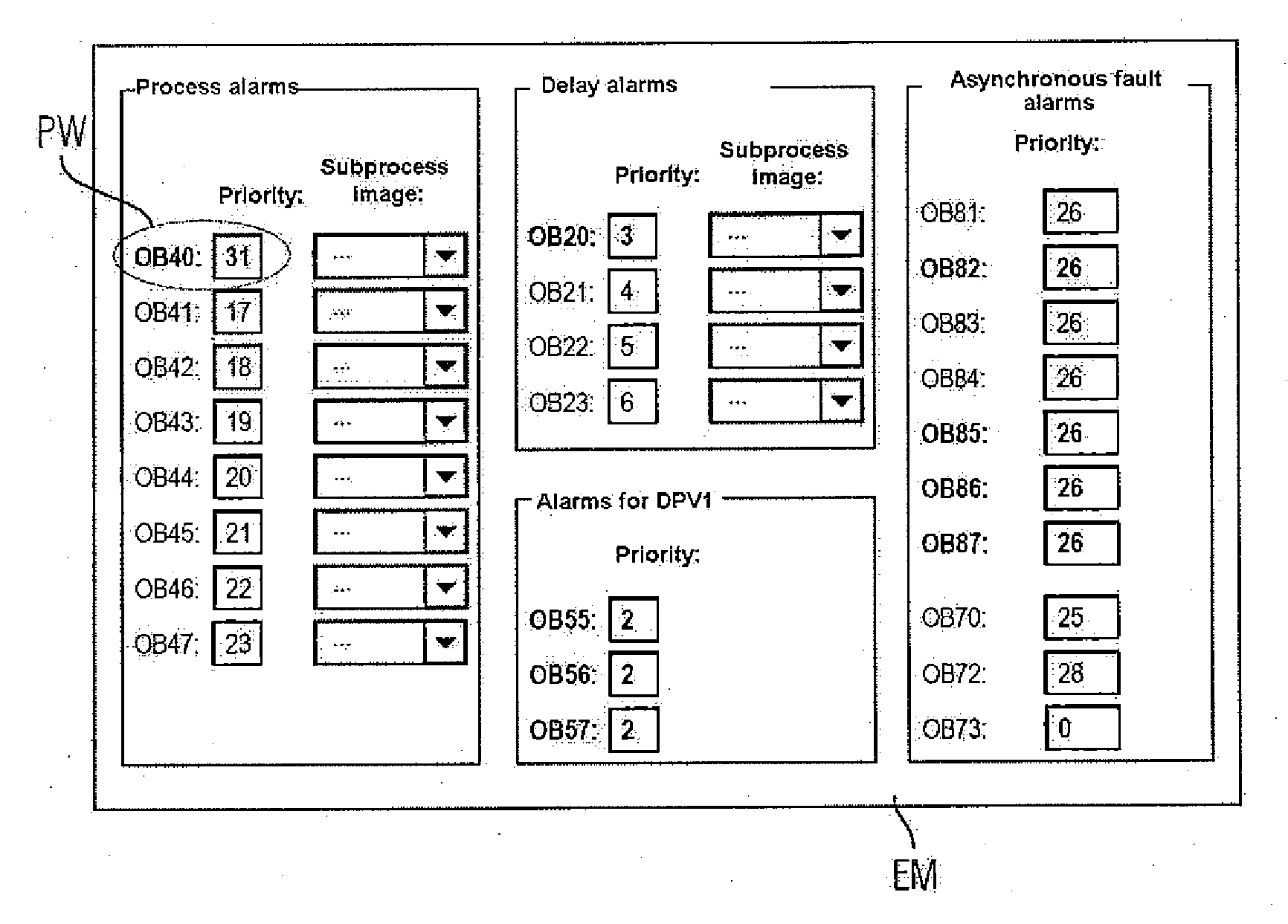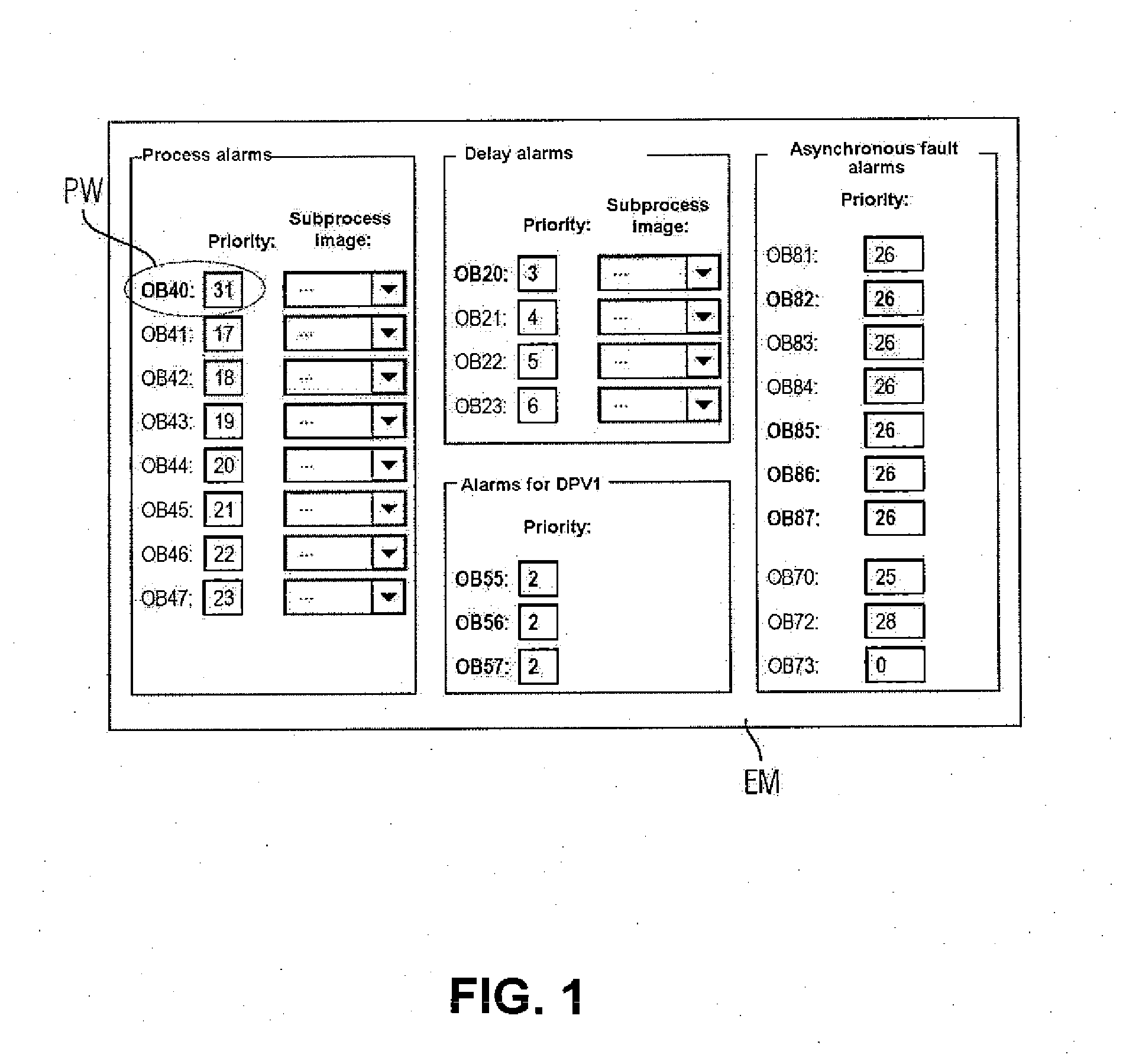Method and Programming System for Programming an Automation Component
a programming system and automation technology, applied in the direction of electrical programme control, program control, instruments, etc., can solve the problems of hardly predicting the general behavior of applications in general and the execution time and response time of particular functions in particular, and the conventional methods of programmable logic controllers and applications implemented using them are either less suitable, etc., to achieve the effect of reliably using the speed advantage of cache memory
- Summary
- Abstract
- Description
- Claims
- Application Information
AI Technical Summary
Benefits of technology
Problems solved by technology
Method used
Image
Examples
Embodiment Construction
[0021]FIG. 1 shows an input option for priority values which can be assigned to events and other program parts. More particularly, FIG. 1 illustrates an input option EM which presents different program parts or tasks of an automation program, such as example process alarms, delay alarms, asynchronous fault alarms and other alarms. Each of these categories lists different program modules that are also referred to as “organizational modules” OB. A priority value PW can be assigned to each of these organizational modules OB, at least that organizational module OB with the highest priority value (here: 31)—the organizational module OB40 in the figure—being intended to be persistently stored in the special main memory.
[0022]The input option EM is thus a user interface that provides a convenient option for creating or determining PLC subapplications with stringent requirements imposed on reproducibility and performance, the underlying real hardware being concealed to a user. The system mu...
PUM
 Login to View More
Login to View More Abstract
Description
Claims
Application Information
 Login to View More
Login to View More - R&D
- Intellectual Property
- Life Sciences
- Materials
- Tech Scout
- Unparalleled Data Quality
- Higher Quality Content
- 60% Fewer Hallucinations
Browse by: Latest US Patents, China's latest patents, Technical Efficacy Thesaurus, Application Domain, Technology Topic, Popular Technical Reports.
© 2025 PatSnap. All rights reserved.Legal|Privacy policy|Modern Slavery Act Transparency Statement|Sitemap|About US| Contact US: help@patsnap.com



